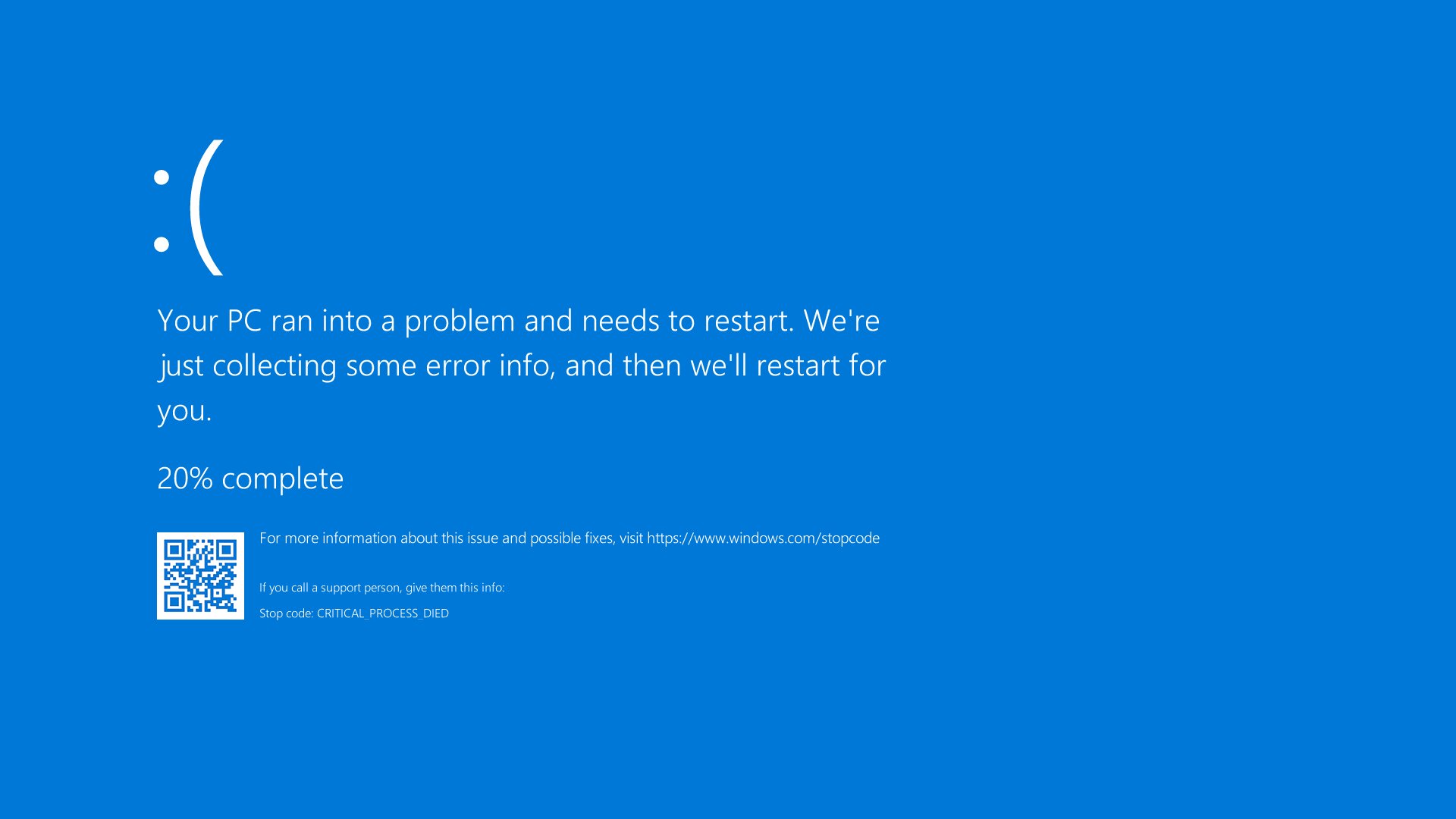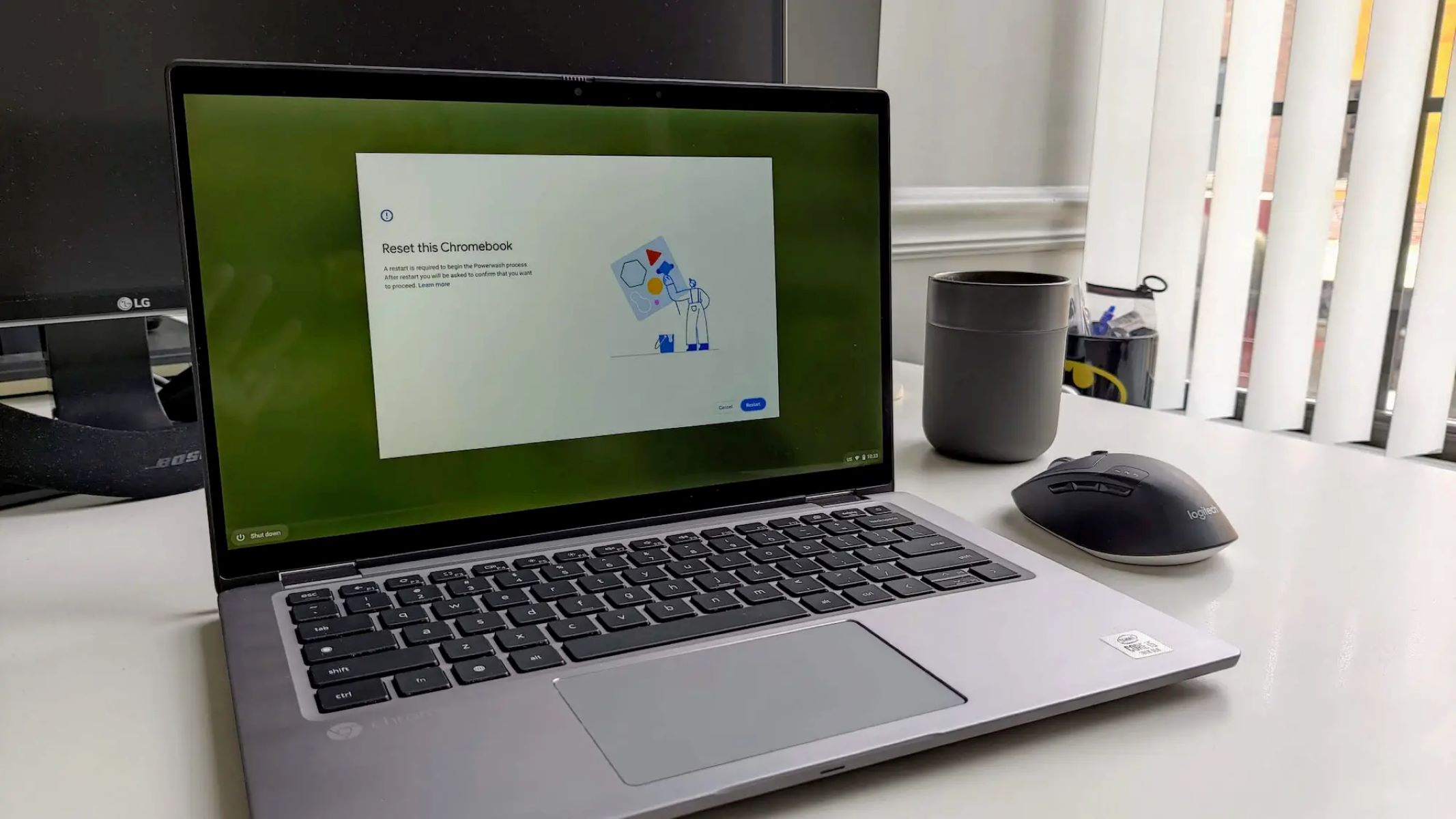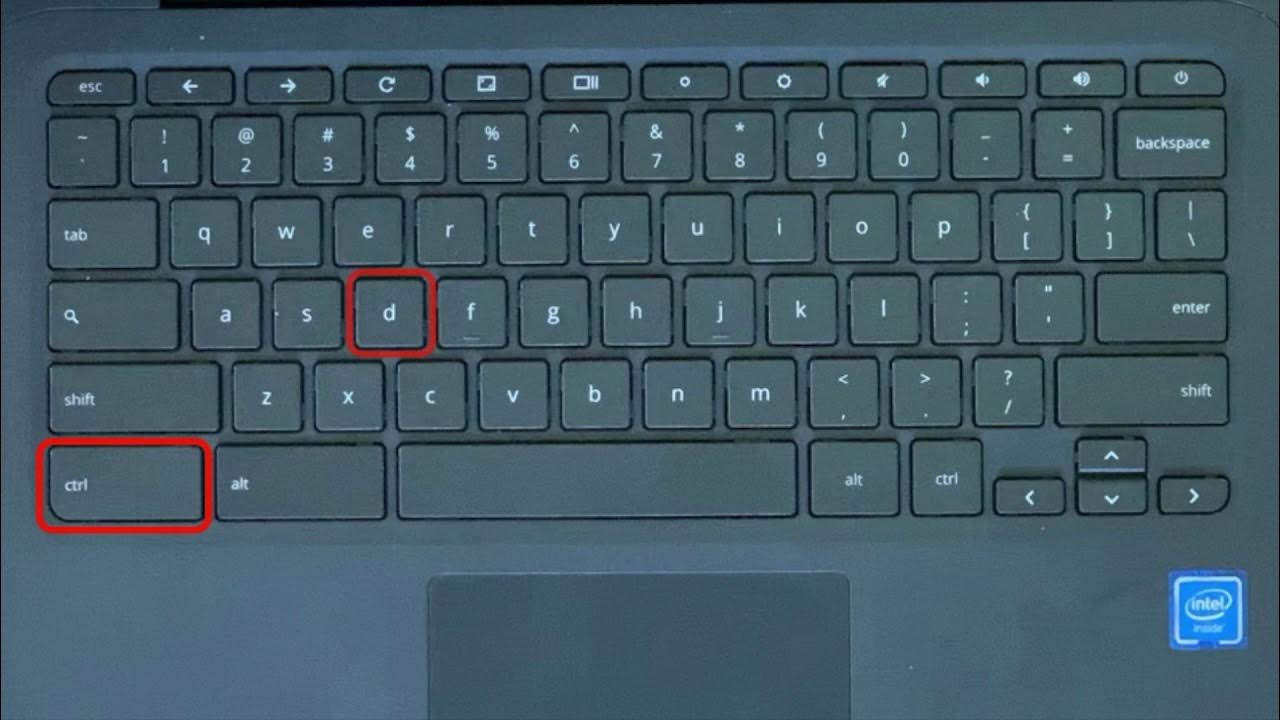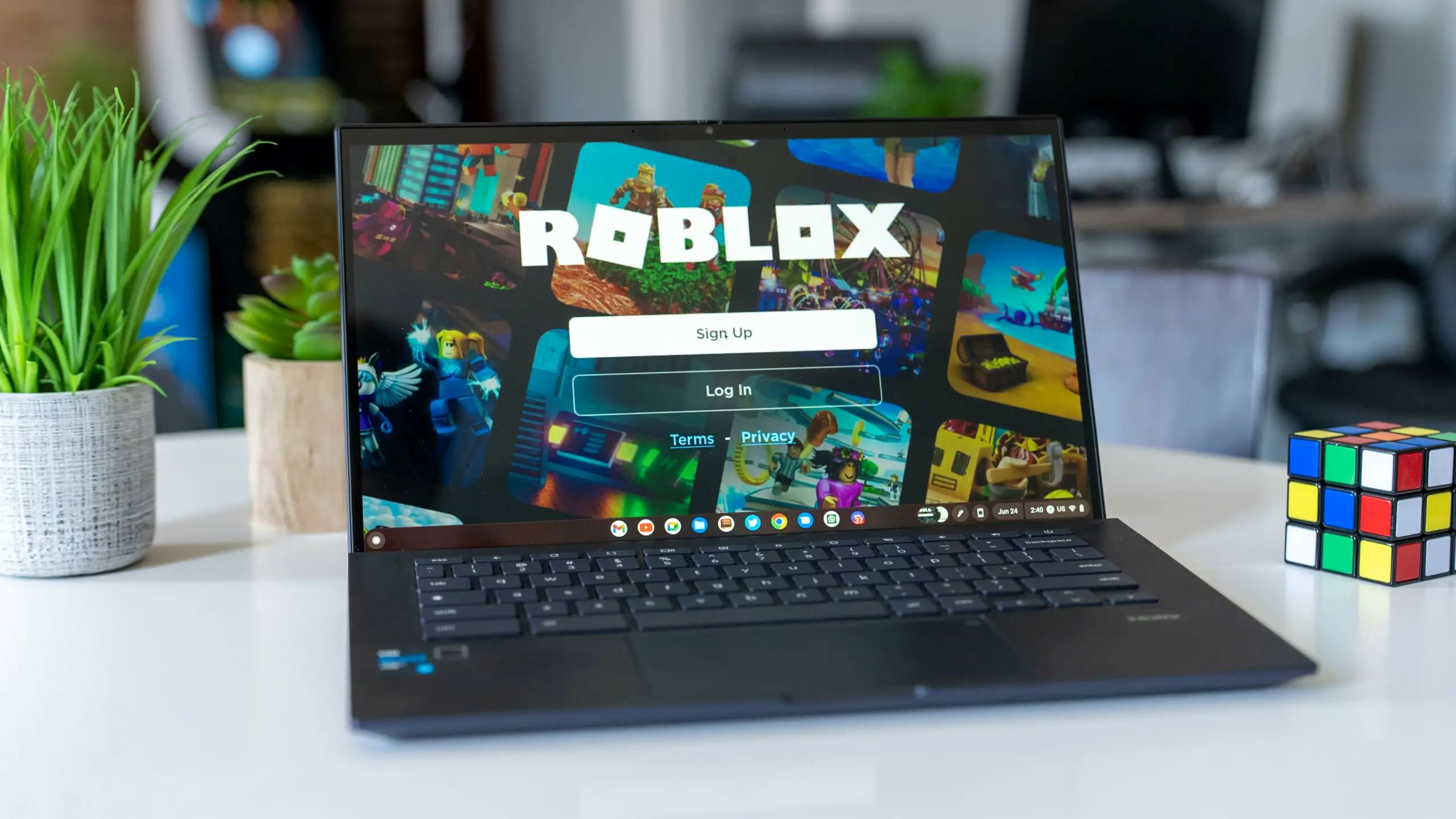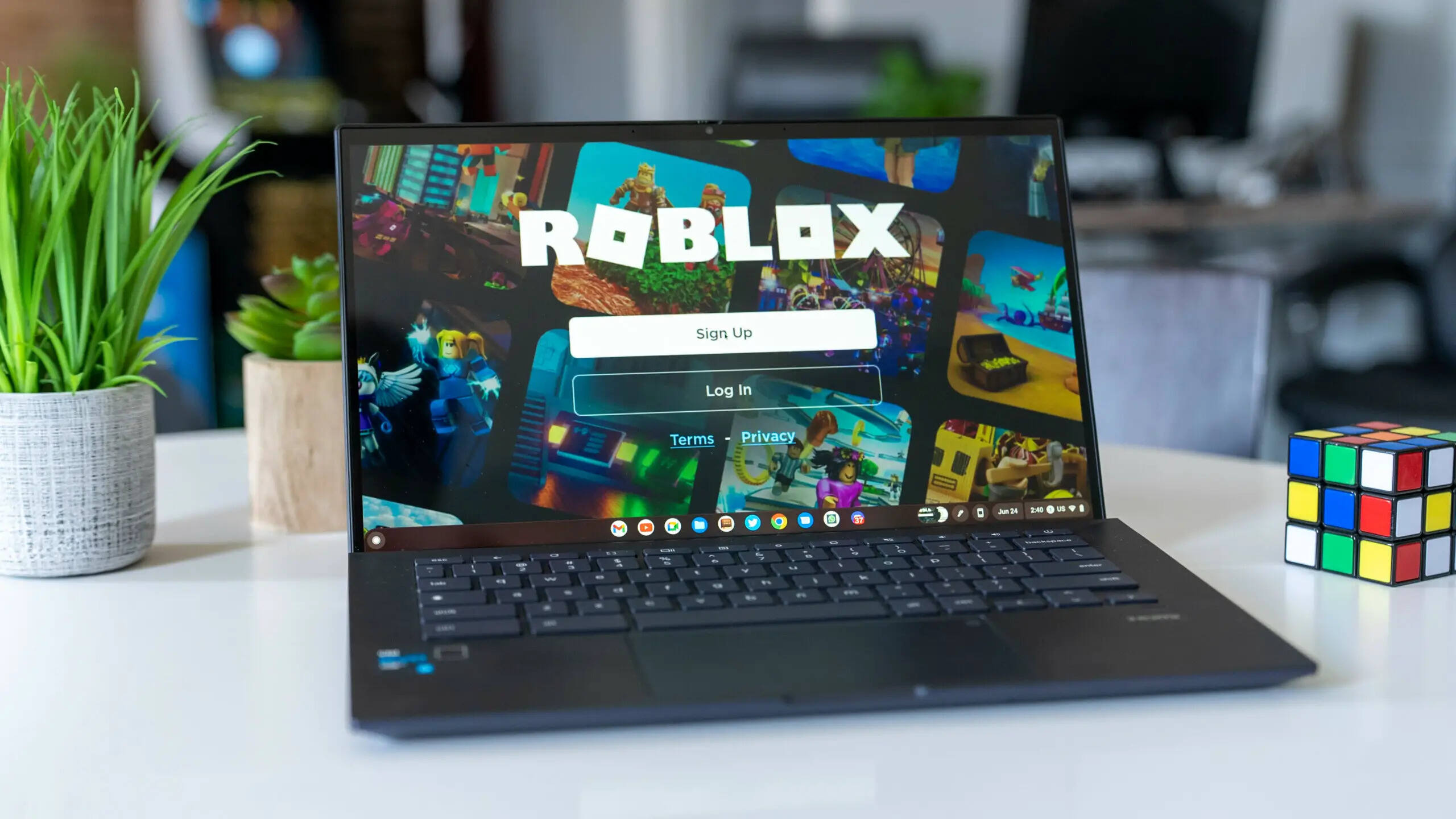Introduction
Welcome to the world of tech pranks and experiments! While most people strive to keep their computers running smoothly and efficiently, today we’re going to explore a different path. In this article, we’ll dive into the intriguing topic of intentionally crashing a Chromebook, a popular and widely-used laptop running on Google’s Chrome operating system.
Now, before we proceed, we must emphasize that crashing your Chromebook intentionally may lead to data loss, hardware damage, or void your warranty. So, it’s essential to approach these experiments with caution and use them solely for educational or entertainment purposes.
So why would anyone want to crash a Chromebook, you might ask? Well, there are various reasons – from testing the system’s stability to troubleshooting, or even just satisfying your curiosity about how far you can push your device. Whatever the motivation, we’re here to guide you through different methods that can potentially crash your Chromebook.
However, it’s important to note that intentionally crashing your Chromebook should only be done in controlled environments and at your own risk. Without further ado, let’s explore the ways you can push your Chromebook to its limits and potentially experience a system crash.
Overwhelming the System with Multiple Tabs
One surefire way to put your Chromebook under strain is by opening a multitude of tabs simultaneously. Chromebooks are known for their efficient handling of web browsing, but they do have their limits. By continuously opening tabs, you can push the device’s RAM and processor to the brink, potentially resulting in a crash.
To begin, simply start opening as many tabs as possible, loading various resource-intensive websites. You can try loading video streaming platforms, online games, or websites heavy with graphics and animations. Keep opening tabs until your Chromebook starts struggling to keep up with the demand.
As you open more tabs, you’ll notice the system slow down, and the browser may become unresponsive. At this point, you’re reaching the device’s limitations. If you keep going, you might witness the system freezing or even crashing entirely.
It’s important to note that this experiment may cause data loss if you’re working on any unsaved documents or forms. So, ensure you have backups of any critical information before attempting to overwhelm your Chromebook with multiple tabs.
Remember, this method is purely for testing purposes and not recommended for everyday use. Overloading your Chromebook with tabs affects its performance and can result in decreased battery life and overall responsiveness. Use this experiment responsibly and be prepared for potential system crashes.
Running Heavy Applications Simultaneously
If overwhelming your Chromebook with multiple tabs wasn’t enough, another method to push your device to its limits is by running heavy applications simultaneously. By launching resource-intensive applications, you can test the system’s ability to handle a robust workload.
Start by opening applications that consume a significant amount of system resources. For example, you can run video editing software, graphic design tools, or virtual machines. These applications tend to be resource-hungry, placing a strain on the processor, RAM, and storage of your Chromebook.
As you launch more heavy applications, you may notice that the device starts to slow down. The applications might become unresponsive, and you may experience significant lag and delays in performance. This indicates that your Chromebook is struggling to handle the workload.
If you continue to run multiple heavy applications simultaneously, you may eventually reach a point where your Chromebook crashes. The crash could manifest as a frozen screen, a sudden shutdown, or an error message. Please keep in mind that crashing your Chromebook in this manner may result in data loss or potential hardware damage.
This experiment is not recommended for regular usage, as it puts a heavy strain on your Chromebook’s hardware. Running intensive applications simultaneously can lead to overheating, decreased battery life, and potential system instability. So, use this method with caution and only in controlled environments.
Constantly Clearing Cache and Cookies
Clearing cache and cookies is a routine maintenance task that helps improve the performance of your Chromebook. However, constantly clearing cache and cookies can potentially push your device towards a crash.
Cache and cookies store temporary data and website preferences, allowing faster access to websites you frequently visit. By clearing them regularly, you remove this stored data, forcing the Chromebook to retrieve it again. While this usually helps maintain optimal performance, excessively clearing cache and cookies can overwhelm the system with constant data requests.
To test this method, continuously clear your cache and cookies while browsing the web. You can use the Chrome browser settings to clear these data selectively or choose to clear everything. As you repeatedly clear cache and cookies, especially during active browsing sessions, you may notice the Chromebook becoming less responsive or possibly freezing altogether.
The constant clearing of cache and cookies creates a constant influx of data retrieval requests, which the system may struggle to handle. This can lead to an overload on system resources and ultimately result in a crash.
However, it’s essential to strike a balance between clearing cache and cookies for better performance and avoiding excessive removal. Frequent clearing is recommended but overdoing it can have adverse effects. Remember, this method is purely experimental and not suitable for regular browsing habits.
It’s important to note that clearing cache and cookies will log you out of websites and may remove saved preferences or form data. So, make sure to back up any important information before attempting this experiment.
While it’s unlikely that clearing cache and cookies alone will cause permanent damage to your Chromebook, it’s always wise to exercise caution and perform such experiments within a controlled environment.
Downloading Suspicious Extensions or Files
When it comes to intentionally crashing your Chromebook, one riskier method involves downloading suspicious extensions or files. By introducing potentially malicious elements into your system, you raise the chances of triggering a crash or encountering system instabilities.
To begin, search for and download extensions or files from unverified sources or websites notorious for hosting questionable content. Be cautious as these could potentially be harmful or contain malware.
Once you have downloaded the suspicious extension or file, install it on your Chromebook. This action may trigger a variety of unwanted behaviors such as browser hijacking, excessive resource consumption, or conflicts with existing system components.
As the suspicious extension or file integrates itself into the system, you may observe a range of adverse effects. These could include browser crashes, error messages, sudden freezes, or even system-wide instability.
However, it’s vital to note that intentionally downloading and installing potentially malicious content poses a significant risk to your data and device security. We strongly advise against performing this experiment on your primary Chromebook or any device with sensitive information.
If you choose to proceed with this method, ensure you have proper security measures in place, such as using a separate test environment or virtual machine to minimize potential damage to your system. Always exercise caution and avoid compromising the safety of your personal information.
Remember, the purpose of this experiment is to explore the vulnerabilities of your Chromebook. Yet, it is crucial to prioritize your privacy and security. Proceed with this method only if you fully understand the potential risks involved.
Abusing Developer Mode
One way to potentially crash your Chromebook is by abusing the Developer Mode. Developer Mode enables advanced users to access additional customization options and debugging tools. However, misusing Developer Mode can lead to system instability and crashes.
Enabling Developer Mode on your Chromebook is a straightforward process. By following the appropriate steps outlined by the manufacturer, you can gain access to various advanced features and functionalities typically restricted in normal mode.
Once you’ve activated Developer Mode, you have the freedom to modify system settings, experiment with custom firmware, and install third-party applications not approved by Google. However, with this freedom comes responsibility.
To push your Chromebook towards a crash, you can start by tweaking crucial system settings, such as adjusting kernel parameters or modifying core system files. These actions carry significant risks, as improper changes to essential system components can render your Chromebook unstable or completely unusable.
Furthermore, installing unauthorized or custom firmware can potentially lead to compatibility issues and system conflicts. This can result in frequent crashes, error messages, and unexpected behavior.
It’s important to keep in mind that deliberately abusing Developer Mode and making unauthorized changes may void your warranty and compromise the security and stability of your Chromebook.
Proceed with caution and ensure you fully understand the potential consequences. If you’re unsure about making specific modifications, it’s recommended to seek guidance from experienced users or consult official documentation provided by the Chromebook manufacturer.
While experimenting with Developer Mode can be enticing, it’s crucial to exercise restraint and use it responsibly. Always remember to back up your data before attempting any modifications, and be prepared for potential crashes or system failures.
Disabling Security Features
Disabling security features on your Chromebook is another method that can lead to system crashes and vulnerabilities. Although this is an experiment, it’s important to note that disabling security features can expose your device to potential threats and compromise your data.
Chromebooks are designed with a strong emphasis on security, with features such as built-in antivirus protection, sandboxed applications, and automatic updates. These measures help keep your device safe from malware and cyberattacks.
To intentionally crash your Chromebook, you can start by disabling key security features such as antivirus software, firewall protection, or automatic updates. This removal of protective barriers opens up your system to potential exploit and malware attacks.
By disabling these protective features, you leave your Chromebook vulnerable to various risks, including malware infections, data breaches, and unauthorized access. These security gaps can lead to system crashes, performance issues, and potential data loss.
However, it’s important to recognize that intentionally disabling security features goes against best practices for maintaining a secure computing environment. Security is paramount in protecting your personal information, sensitive data, and online privacy.
If you decide to proceed with disabling security features for experimental purposes, it’s crucial to do so in a controlled environment with proper precautions. This may involve setting up a separate test user account or utilizing virtual machines to isolate potential threats.
Once again, it’s essential to emphasize that disabling security features on your Chromebook should not be done on your primary device or any system containing sensitive information. Ensure you understand the potential consequences and have appropriate security measures in place before proceeding.
Remember, this experiment is purely for exploration purposes and should not be carried out as a regular practice. Prioritize the security and privacy of your data, and always exercise caution when making modifications that could compromise your Chromebook’s stability and protection.
Forcing the System to Use all Available Resources
If you’re looking to push your Chromebook to its limits, forcing the system to utilize all available resources is a method worth exploring. By putting maximum strain on your device’s hardware, you may induce a crash or encounter performance issues.
To begin, launch resource-intensive applications or tasks that require significant processing power, memory, and disk usage. For example, you can run multiple graphic-intensive programs, render complex 3D models, or perform extensive data processing tasks.
Make sure to open several applications or perform multiple demanding tasks simultaneously to consume as much of your Chromebook’s available resources as possible. This action will force the device to allocate excessive amounts of RAM and processing power, potentially pushing it beyond its limits.
As you overload the system with resource-intensive activities, you may notice significant performance degradation, including lag, unresponsiveness, and potential freezes. These symptoms indicate that your Chromebook is struggling to handle the excessive resource demands placed upon it.
At some point, if you continue to force the system to use all available resources, you may experience a crash. This crash can manifest as a sudden shutdown, a blue screen error, or an application error message.
Keep in mind that intentionally forcing the system to consume all available resources can cause overheating and reduce the overall lifespan of your Chromebook. Extended periods of high resource usage can lead to thermal throttling, potentially affecting the device’s performance even after the experiment.
This method is explicitly intended for experimentation and should not be practiced in regular usage scenarios. It’s crucial to understand that constantly pushing your Chromebook to its limits may result in permanent damage or instability.
Exercise caution and be aware of the potential risks involved. Ensure you have backups of any important data before attempting to force your Chromebook to use all available resources. Always prioritize the longevity and well-being of your device as you explore its limits.
Uninstalling Necessary System Files
Uninstalling necessary system files on your Chromebook is an extreme measure that can lead to severe consequences, including system crashes. It involves removing essential components that are crucial for the proper functioning of your device.
To proceed with this experiment, you can attempt to uninstall system files or components that are vital for the Chromebook’s operation. These files can include system libraries, essential software packages, or core components of the operating system.
It’s important to note that uninstalling necessary system files can have serious effects on the stability and functionality of your Chromebook. Removing critical components can lead to system errors, loss of functionality, and potential crashes.
Before attempting to uninstall any system files, it’s crucial to understand the potential risks involved. This experiment should be conducted in a controlled environment, such as a test user account or a virtual machine, to minimize the impact on your primary Chromebook setup.
Additionally, it’s essential to have a backup of your important files and data in case of unintended consequences or system instability. Uninstalling necessary system files can result in data loss or prevent the Chromebook from booting up properly.
While this experiment may provide insights into the impact of removing critical system components, it is essential to reiterate that uninstalling necessary system files is not recommended unless you have extensive technical knowledge and a thorough understanding of the potential risks involved.
Remember, the purpose of this experiment is purely for exploration, and it should not be performed on your primary Chromebook or any device that contains important information. Always exercise caution and prioritize the stability and functionality of your device.
Manipulating Operating System Files
Manipulating operating system files on your Chromebook is a risky endeavor that can lead to system crashes and potentially render your device inoperable. This method involves making changes to critical system files, which can have serious consequences if not performed carefully.
If you’re interested in exploring this experiment, proceed with extreme caution. Before making any modifications, it’s crucial to understand the potential risks involved and the impact it may have on your Chromebook’s stability and functionality.
To manipulate operating system files, you will need to gain access to the root file system using elevated permissions. This can be done by enabling Developer Mode and accessing the Chrome OS shell or using specialized tools designed for system file manipulation.
Once you have access to the operating system files, you can make changes to the configuration settings, modify system scripts, or edit core files. These modifications can affect various aspects of the Chromebook’s operation, including its boot process, device drivers, or system services.
It’s crucial to note that manipulating operating system files without proper knowledge or understanding can result in severe system instabilities, crashes, and potential data loss. Even a minor error or unintentional change to a critical system file can prevent the Chromebook from functioning correctly.
This experiment should only be performed by advanced users with extensive technical knowledge and a clear understanding of the potential risks involved. It is highly recommended to practice these modifications in a controlled environment, such as a test user account or a virtual machine, to minimize the impact on your primary Chromebook setup.
Remember, the purpose of this experiment is solely for exploration and understanding the inner workings of the Chromebook operating system. It should not be attempted on your primary device or any system containing important information unless you are fully prepared to accept the risks associated with it.
Always proceed with caution, have proper backups of your data, and prioritize the stability and functionality of your Chromebook as you navigate the realms of manipulating operating system files.
Neglecting Software Updates
Neglecting software updates on your Chromebook can lead to instability and potential crashes. Software updates are not only essential for bug fixes and feature enhancements but also for maintaining the security and overall performance of your device.
Chrome OS regularly releases updates to address vulnerabilities, improve system stability, and provide new features. By neglecting these updates, you deny your Chromebook the latest patches and enhancements, potentially leaving it exposed to security risks and performance issues.
When you choose to ignore or delay software updates, your Chromebook may become more susceptible to malware, viruses, and other malicious threats. This can lead to system crashes as well as privacy breaches and data loss.
Furthermore, neglecting updates can also result in compatibility issues with newer software and applications. The outdated system may struggle to run the latest software, leading to crashes or errors when attempting to launch or use certain applications.
It’s important to note that Chrome OS updates are designed to optimize performance, enhance stability, and address known issues. By keeping your device updated, you benefit from improved system behavior and minimized risk of crashes.
To ensure the smooth operation and security of your Chromebook, it is highly recommended to regularly install software updates as they become available. Enabling automatic updates is an effective way to ensure that your device stays up to date without manual intervention.
However, it’s also important to exercise caution and back up your data before applying any updates. In rare cases, software updates may introduce unforeseen issues or conflicts, which could potentially affect the stability of your Chromebook.
Overall, neglecting software updates on your Chromebook can have far-reaching consequences. To maintain optimal performance, security, and stability, prioritize the installation of software updates and keep your device up to date.
Conclusion
Exploring the methods to intentionally crash a Chromebook can be both intriguing and risky. The experiments we discussed, such as overwhelming the system with multiple tabs, running heavy applications simultaneously, constantly clearing cache and cookies, downloading suspicious extensions or files, abusing Developer Mode, disabling security features, forcing the system to use all available resources, uninstalling necessary system files, manipulating operating system files, and neglecting software updates, are meant for educational or entertainment purposes only.
It’s important to reiterate that intentionally crashing your Chromebook can lead to data loss, hardware damage, or voiding of warranty. These experiments should only be conducted in controlled environments and with the understanding of the risks involved.
While it can be tempting to explore the limits of your Chromebook, it’s crucial to prioritize the stability, security, and functionality of your device. Always exercise caution, back up your data before attempting any experiments, and be prepared for potential crashes or system failures.
Regularly maintaining and updating your Chromebook is essential for its overall performance and security. It’s highly recommended to stay vigilant and install software updates promptly to benefit from bug fixes, feature enhancements, and increased system stability.
Remember to use these methods responsibly and ethically. Understand the potential consequences, follow best practices, and consult official resources or expert guidance if needed. By approaching these experiments with caution, you can gain valuable insights into the inner workings of your Chromebook while protecting the integrity and functionality of your device.







